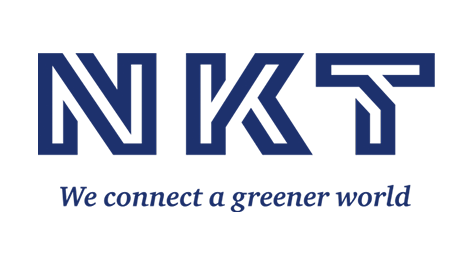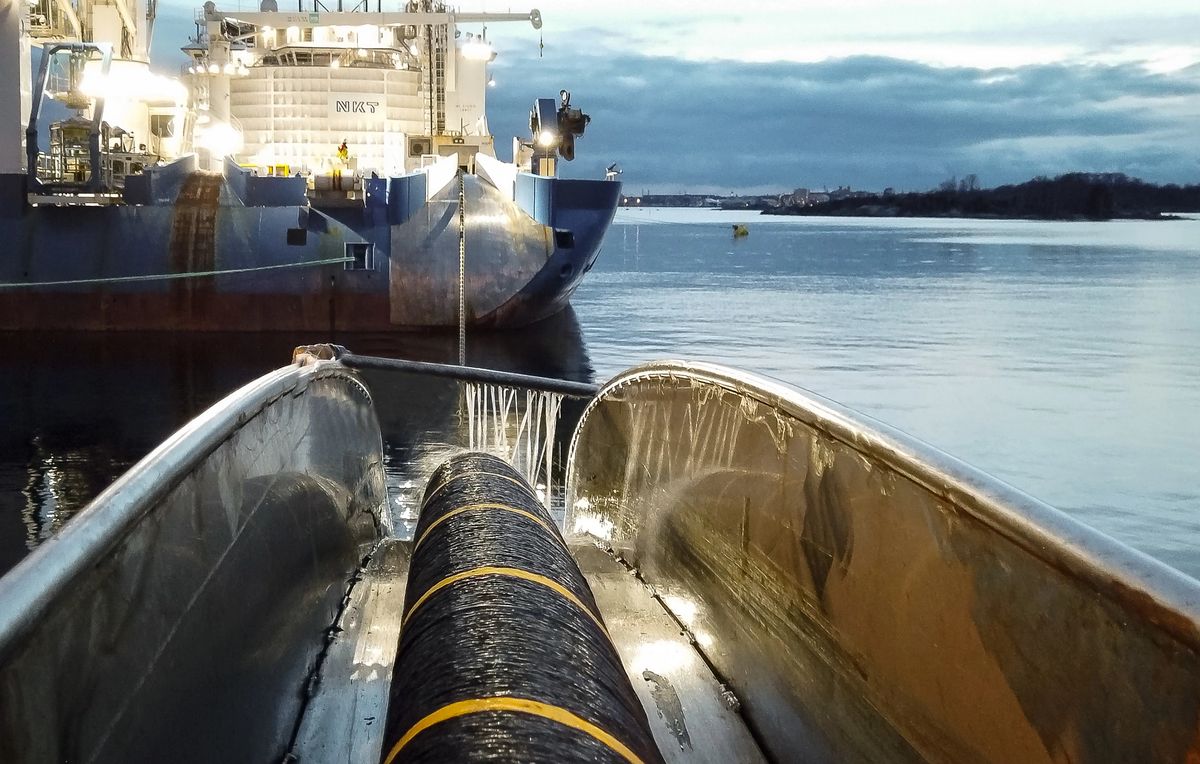NKT – NKT awarded two high-voltage projects under existing framework agreement with TenneT
NKT has been awarded two turnkey projects in Germany under the existing multi-year framework agreement with TenneT.
The projects are part of TenneT’s 2GW Program, which is considered one of the most ambitious infrastructure projects in the energy transition of Europe.
TenneT, the Dutch-German transmission system operator, has selected NKT to provide 525 kV XLPE high-voltage direct current (HVDC) on- and offshore power cable systems for two projects under the existing framework agreement, which was announced in Company Announcement no. 14 of 5 May 2023.
– We are thrilled to once again be selected as a key partner for TenneT’s ambitious 2GW Program. This confirms our strong partnership and NKT’s leading position in the high-voltage DC power cable market. We look forward to applying our advanced power cable technology to these two additional projects in Germany, which will enable the energy transition in Europe by facilitating the efficient transport of wind power from the North Sea to the onshore grid, says Claes Westerlind, President and CEO at NKT.
The two projects awarded to NKT by TenneT are LanWin7 and a part of NordOstLink. The contracts are expected to be called off in 2026-27 and will have a combined value of approximately EUR 1bn, which includes cable design, engineering, production as well as on- and offshore installation. With these projects, a total of five projects have been awarded to NKT under the framework agreement, which runs until 2028 with possible extension until 2031.
The award does not change the 2024 financial outlook for NKT.
Key facts:
- Project scope: Cable design, engineering, production, as well as installation on- and offshore.
- Cable specifications:
- LanWin7 route length: 320 km. Project is for on- and offshore 525 kV XLPE HVDC power cable system.
- NordOstLink (partial) route length: 65 km. Project is for onshore 525 kV HVDC power cable system.
- Project specifications:
- The LanWin7 system is one of the offshore grid connection systems planned to connect to the multi-terminal hub in the area of Pöschendorf, Schleswig-Holstein. This so-called NordHub will integrate multiple direct current (DC) and AC connections, facilitating the efficient transport of wind power from the North Sea to the onshore grid.
- The NordOstLink (partial) project involves laying additional cables to enhance the capacity and flexibility of the grid.
- Schedule: Contract call offs under the framework agreement are expected in 2026-27. Commissioning of the projects is expected in 2033-34.
SourceNKT
EMR Analysis
More information on NKT: See the full profile on EMR Executive Services
More information on Claes Westerlind (President and Chief Executive Officer, NKT): See the full profile on EMR Executive Services
More information on TenneT: https://www.tennet.eu + TenneT is a leading European grid operator. Committed to providing a secure and reliable supply of electricity 24 hours a day, 365 days a year, while helping to drive the energy transition in our pursuit of a brighter energy future – more sustainable, reliable and affordable than ever before. Lighting the way ahead together
Next time you turn on the lights, take a moment to think about where that power comes from. In the Netherlands and Germany, it was very likely brought to you by us, TenneT. We own and operate over 25,000 kilometres of high-voltage lines and cables.
As the Transmission System Operator (TSO) for the Netherlands, and a significant part of Germany, TenneT owns and operates over 25,000 kilometres of high-voltage lines and cables. We deliver electricity to 43 million domestic and business users, safely and reliably, 24 hours a day and 365 days a year. With over 7,400 employees in two countries, we are driven by our mission to ensure the lights stay on and that power is available, at the flick of a switch, whenever and wherever you need it.
To do this, we design, build, maintain and operate a high-voltage grid stretching across land and sea. This carries electricity from where it is made – including a rapidly increasing proportion of wind and solar energy – to where it is used. We carry it over ground, underground, under the sea and across borders, over our rapidly expanding high-voltage grid. With a service level as high as 99.99963 %, we are one of the best in the world at our job.
More information on Manon van Beek (Chairman of the Board and Chief Executive Officer, TenneT): https://www.tennet.eu/about-tennet/our-organisation/executive-board + https://www.linkedin.com/in/manonjjvanbeek/
More information on Tim Meyerjürgens (Chief Operations Officer, TenneT): https://www.tennet.eu/company/profile/executive-board/ + https://www.linkedin.com/in/timmeyerj%C3%
EMR Additional Notes:
- Extra Low-Voltage (ELV):
- Voltage of 50V or less (AC RMS), or 120V or less (ripple-free DC).
- Low-Voltage (LV):
- The International Electrotechnical Commission (IEC) defines supply system low voltage as voltage in the range 50–1000 V AC or 120–1500 V DC.
- Medium-Voltage (MV):
- Medium-voltage circuit breakers rated between 1 and 35/72 kV.
- High-Voltage (HV):
- The International Electrotechnical Commission define high voltage as above 1000 V for alternating current, and at least 1500 V for direct current.
- Super High-Voltage or Extra High-Voltage (EHV):
- Is >300kV.
- Ultra High-Voltage (UHV):
- Is >1.000kV.
- Kilowatt (kW):
- A kilowatt is simply a measure of how much power an electric appliance consumes—it’s 1,000 watts to be exact. You can quickly convert watts (W) to kilowatts (kW) by diving your wattage by 1,000: 1,000W 1,000 = 1 kW.
- Megawatt (MW):
- One megawatt equals one million watts or 1,000 kilowatts, roughly enough electricity for the instantaneous demand of 750 homes at once.
- Gigawatt (GW):
- A gigawatt (GW) is a unit of power, and it is equal to one billion watts.
- According to the Department of Energy, generating one GW of power takes over three million solar panels or 310 utility-scale wind turbines
- Terawatt (TW):
- One terawatt is equal to 1,000,000,000,000 watts.
- The main use of terawatts is found in the electric power industry.
- According to the United States Energy Information Administration, America is one of the largest electricity consumers in the world using about 4,146.2 terawatt-hours.
- Transmission System Operator (TSO):
- A Transmission System Operator (TSO) is an entity entrusted with transporting energy in the form of natural gas or electrical power on a national or regional level, using fixed infrastructure. The term is defined by the European Commission.
- Distribution System Operators (DSO):
- Entities responsible for distributing and managing energy from the generation sources to the final consumers. Digitalisation is the key to securing the DSO model, which requires investments in automation, smart meters, real-time systems, big data and data analytics.
- A DNO (Distribution Network Operators) already performs much of the tasks that a DSO does, but there are differences. A conventional distribution network is not an active but a reactive or passive network. Passive distribution networks are designed to accept bulk power from transmission system and distribute it, down the network, to consumers.
- Kilovolt-Amperes (kV):
- Kilovolt or “kV” means a unit of potential difference equal to 1,000 volts. Kilovolt or “kV” means the potential difference between two points on a conductor carrying a current of one ampere when the power dissipated between the two points is one kilovolt-ampere. Kilovolt means one thousand volts (kV).
- Kilovolt (kVA):
- kVA stands for Kilo-volt-amperes – a term used for the rating of an electrical circuit. kVA is the product of the circuits maximum current and voltage rating. It is also known as Apparent Power.
- kW is the unit of real power and kVA is a unit of apparent power (or real power plus re-active power). The power factor, unless it is defined and known, is therefore an approximate value (typically 0.8), and the kVA value will always be higher than the value for kW.
- A kVA is 1,000 volt-amps. It’s what you get when you multiply the voltage (the force that moves electrons around a circuit) by the amps (electrical current).
- Megavolt-Amperes (MVA):
- MVA or megavolt-amperes is the unit used to measure the apparent power in a circuit. It’s a product of the voltage and current in a circuit.
- 1 kVA is equivalent to 1,000 volts while the 1 MVA is equivalent to 1,000,000 volt-amperes.
- AC (Alternating Current) & DC (Direct Current) & UC (Universal Current):
- Direct current (DC) is an electric current that is uni-directional, so the flow of charge is always in the same direction. As opposed to alternating current, the direction and amperage of direct currents do not change. It is used in many household electronics and in all devices that use batteries.
- Direct current has many uses, from the charging of batteries to large power supplies for electronic systems, motors, and more. Very large quantities of electrical energy provided via direct-current are used in smelting of aluminum and other electrochemical processes.
- in contrast to AC power, DC power is entirely made up of active power, meaning that there are almost no losses due to the capacitance of wires when DC power travels long distances. In fact, high voltage AC transmission systems have losses of 7% to 15% with aboveground transmission.
- Alternating Current is used in homes as Direct current can not be easily stepped up or stepped down with the help of transformers whereas alternating current can easily be converted from low voltage to high voltage or vice-versa with the help of transformers.
- “UC” is used for “Universal Current”, that translates to “either DC or AC”. So a 24 V UC input can accept either 24 V AC or 24 V DC.
- XLPE:
- Cross-linked polyethylene, commonly abbreviated PEX, XPE or XLPE, is a form of polyethylene with cross-links.
- XLPE or Cross-linked polyethylene is a thermoset insulation material. Crosslinking polymers is a process which changes the molecular structure of the polymer chains so that they are more tightly bound together and this crosslinking is done either by chemical means or physical means.
- XLPE is suitable for voltage ranges from low to extra high voltage, surpassing other insulation materials such as PVC, Ethylene Propylene Rubber (EPR) and silicone rubbers. Cross-linking the polyethylene also enhances the chemical and oil resistance at elevated temperatures and makes it suitable for use as a Low Smoke Zero Halogen material.
- HVDC Light:
- HVDC Light is the successful and environmentally-friendly way to design a power transmission system for a submarine cable, an underground cable, using over head lines or as a back-to-back transmission. HVDC Light is HVDC technology based on voltage source converters (VSCs).
- HVDC Light is designed to transmit power underground and underwater, also over long distances. It offers numerous environmental benefits, including “invisible” power lines, neutral electromagnetic fields, oil-free cables and compact converter stations.
- As its name implies, HVDC Light is a dc transmission technology. However, it is different from the classic HVDC technology used in a large number of transmission schemes. Classic HVDC technology is mostly used for large point-to-point transmissions, often over vast distances across land or under water. It requires fast communications channels between the two stations, and there must be large rotating units – generators or synchronous condensers – present in the AC networks at both ends of the transmission. HVDC Light consists of only two elements: a converter station and a pair of ground cables. The converters are voltage source converters, VSC’s. The output from the VSC’s is determined by the control system, which does not require any communications links between the different converter stations. Also, they don’t need to rely on the AC network’s ability to keep the voltage and frequency stable. These feature make it possible to connect the converters to the points bests suited for the AC system as a whole.
- HVDC (High-Voltage Direct Current):
- Key enabler for a carbon-neutral energy system. It is highly efficient for transmitting large amounts of electricity over long distances, integration of renewables and interconnecting grids, opening up for new sustainable transmission solutions.
- HVDC Links:
- The first successful HVDC experimental long distance line (37 miles) was made at Munich, Germany in 1882 by Oskar Von Miller and fellow engineers.
- HVDC allows power transmission between AC transmission systems that are not synchronized. Since the power flow through an HVDC link can be controlled independently of the phase angle between source and load, it can stabilize a network against disturbances due to rapid changes in power.
- An HVDC line has considerably lower losses compared to HVAC over longer distances.

- Neu Connect (the first power interconnection between Great Britain and Germany): https://neuconnect-interconnector.com +
- The NeuConnect Interconnector will create the first direct power link between Germany and Great Britain, connecting two of Europe’s largest energy markets for the first time. Around 720km of land and subsea cables will form an ‘invisible highway’ allowing up to 1.4GW of electricity to move in either direction, enough to power up to 1.5 million homes over the life of the project.
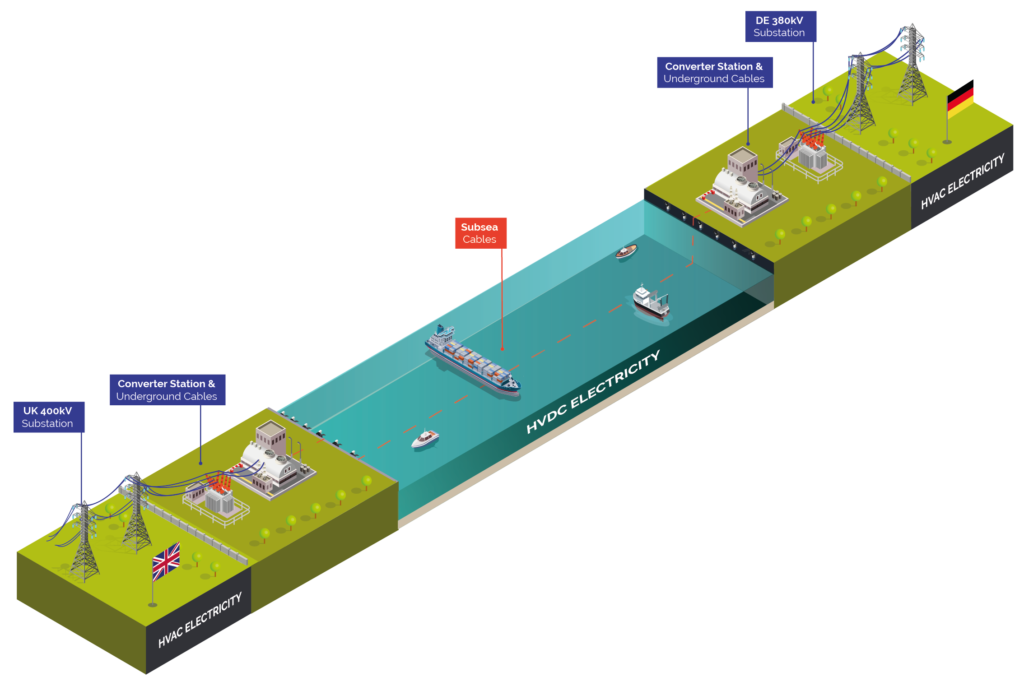
- The Tyrrhenian Link: https://www.terna.it/en/projects/public-engagement/Tyrrhenian-link +
- Connecting Sicily with Sardinia and the Italian peninsula via a double underwater cable: a new electricity corridor at the centre of the Mediterranean; the Tyrrhenian Link. At 950 kilometres long and with a capacity of 1000 MW, this is an infrastructure initiative of international significance, another step towards a more sustainable energy future. The link will improve electricity exchange capacity, facilitate the development of renewable energy sources, and the reliability of the grid.
- The overall project involves two sections: EAST from Sicily to Campania and WEST from Sicily to Sardinia.
- The East section is 480 kilometres long and connects the Fiumetorto landing point, in the municipality of Termini Imerese in Sicily, with the landing point in Torre Tuscia Magazzeno, near Battipaglia in Campania.
- The WEST section is approximately 470 kilometres long and connects the Fiumetorto landing point to the one in Terra Mala, in Sardinia.

- The Viking Link: https://viking-link.com + World’s longest power interconnection. the Viking Link is a 1400 MW high voltage direct current (DC) electricity link between the British and Danish transmission systems connecting at Bicker Fen substation in Lincolnshire and Revising substation in southern Jutland, Denmark.

- The North Sea Link: https://northsealink.com/ + North Sea Link is a 720 kilometre subsea interconnector linking the electricity systems of the UK and Norway. The 1400 megawatt interconnector stretches from Blyth in the UK, across the North Sea, to Kvilldal in Norway.
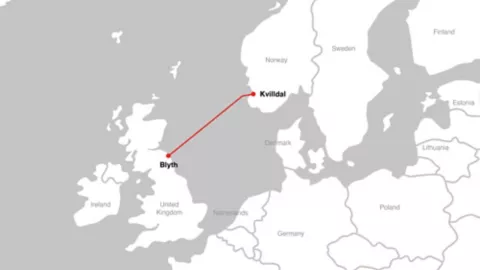
- The Hertel–New York interconnection line: https://www.hydroquebec.com/projects/hertel-new-york-interconnection/ + The Hertel–New York interconnection line project aims to supply clean, renewable energy to New York City. In Québec, the project involves the construction of a line that will span 57.7 km (56.1 km underground and 1.6 km underwater). This 400-kV direct current line will connect Hertel substation in La Prairie to an interconnection point in the Rivière Richelieu at the Canada–United States border.

- The Biscay Gulf Project: https://www.inelfe.eu/en/projects/bay-biscay + The electricity interconnection between Gatika (Spain) and Cubnezais (France) will be the first fundamentally submarine interconnection between Spain and France. This project will increase the exchange capacity from 2,800 to 5,000 MW, improving the safety, stability and quality of electricity supply between the two countries and also with the rest of Europe.
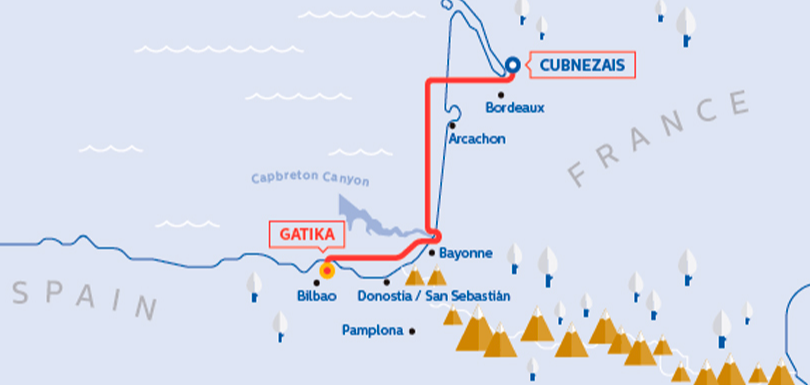
- The Eastern Green Link 2 (EGL2): https://www.ssen-transmission.co.uk/projects/project-map/eastern-green-link-2/ + The Eastern Green Link 2 project is a proposal to install a sub-sea high-voltage direct current (HVDC) cable from Sandford Bay, at Peterhead, to Drax in England. There is currently a large amount of forecasted generation that will require connection to the electricity network in the coming years and as such we are proposing several upgrades to the transmission network across the north of Scotland to facilitate this. The Eastern HVDC Link will play a key role in helping achieve our Net-Zero targets.
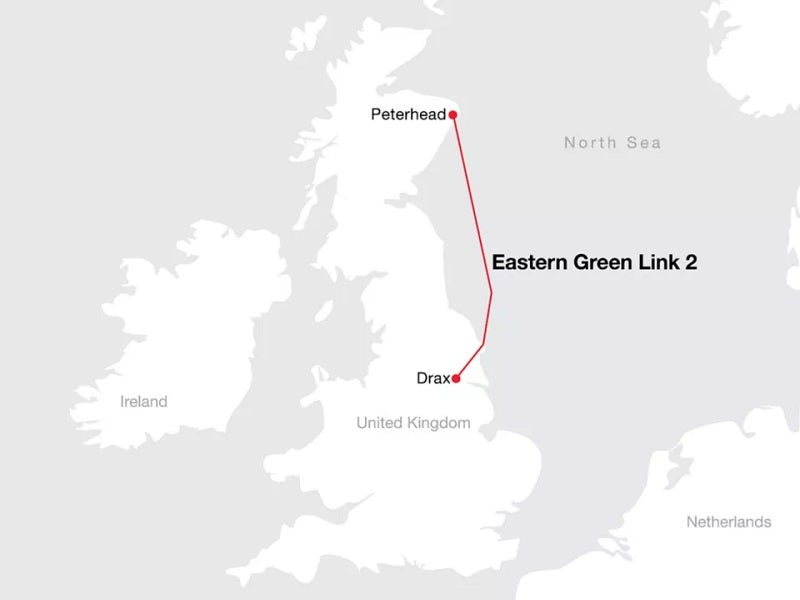
- The EuroAsia Interconnector: https://euroasia-interconnector.com/ + EuroAsia Interconnector Limited is the official EU project developer of the 2,000MW electricity interconnector between Israel, Cyprus, Greece and Europe. The EuroAsia Interconnector is a leading European Project of Common Interest (PCI) labelled as an EU “electricity highway” connecting the national electricity grids of Israel, Cyprus and Greece through a 1,208 km subsea HVDC cable.
- The EuroAsia Interconnector comprises the electricity interconnection between the grids of Israel, Cyprus, Greece through a subsea DC cable and with HVDC onshore converter stations at each connection point, with a total capacity of 2000MW. The project is an energy highway bridging Asia and Europe, with a total length of 1,208 km. It creates a reliable alternative route for the transfer of electric energy to and from Europe.
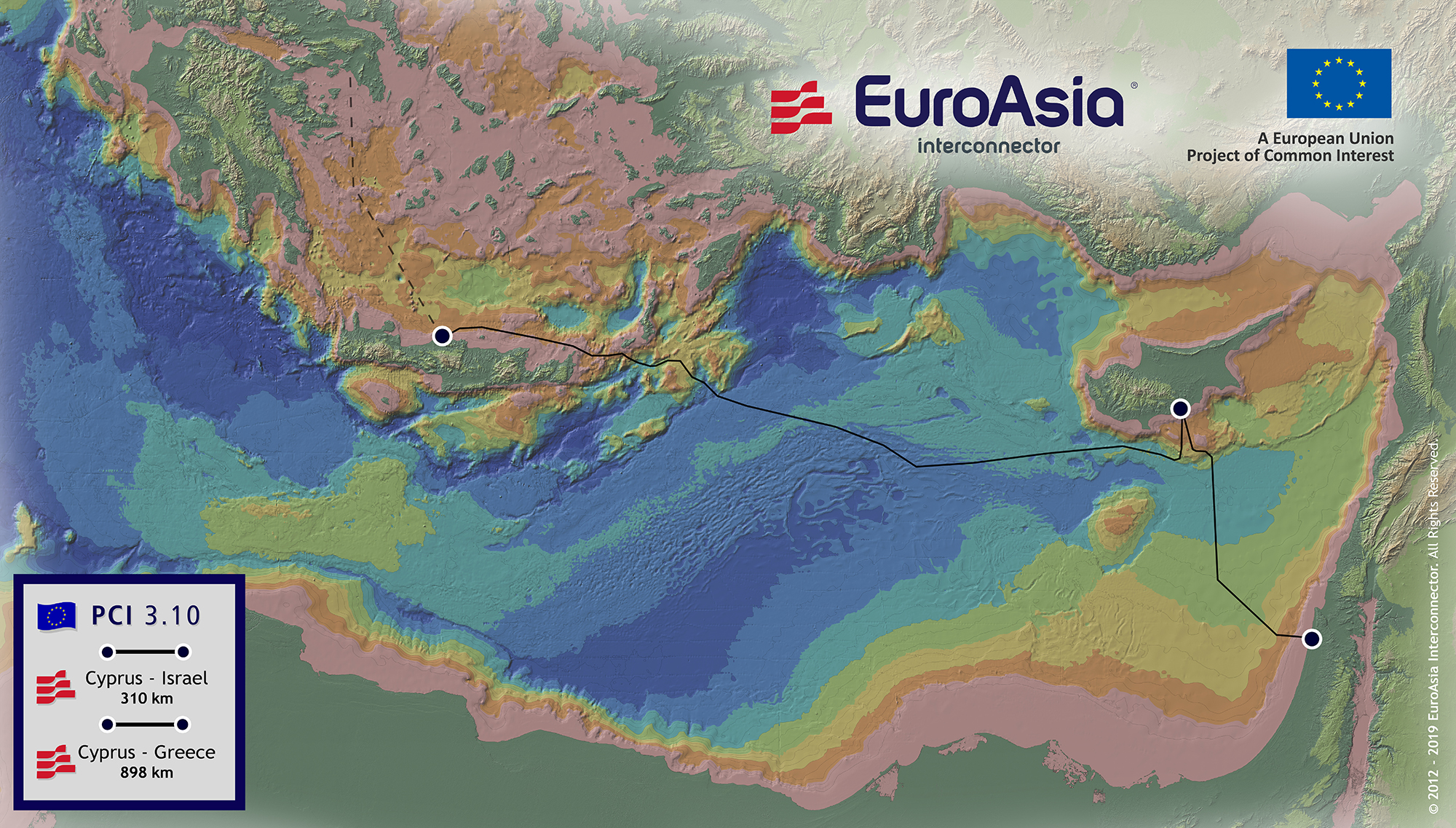
- Grid, Microgrids, DERs and DERM’s:
- The power grid is a network for delivering electricity to consumers. The power grid includes generator stations, transmission lines and towers, and individual consumer distribution lines.
- The grid constantly balances the supply and demand for the energy that powers everything from industry to household appliances.
- Electric grids perform three major functions: power generation, transmission, and distribution.
- A microgrid is a small-scale power grid that can operate independently or collaboratively with other small power grids. The practice of using microgrids is known as distributed, dispersed, decentralized, district or embedded energy production.
- Smart Grid is any electrical grid + IT at all levels . Micro Grid is a group of interconnected loads and DERs (Distributed energy resources) within a clearly defined electrical and geographical boundaries witch acts as a single controllable entity with respect to the main grid.
- Distributed energy resources (DERs) are small-scale electricity supply (typically in the range of 3 kW to 50 MW) or demand resources that are interconnected to the electric grid. They are power generation resources and are usually located close to load centers, and can be used individually or in aggregate to provide value to the grid.
- Common examples of DERs include rooftop solar PV units, natural gas turbines, microturbines, wind turbines, biomass generators, fuel cells, tri-generation units, battery storage, electric vehicles (EV) and EV chargers, and demand response applications.
- Distributed energy resources management systems (DERMS) are platforms which helps mostly distribution system operators (DSO) manage their grids that are mainly based on distributed energy resources (DER).
- DERMS are used by utilities and other energy companies to aggregate a large energy load for participation in the demand response market. DERMS can be defined in many ways, depending on the use case and underlying energy asset.

